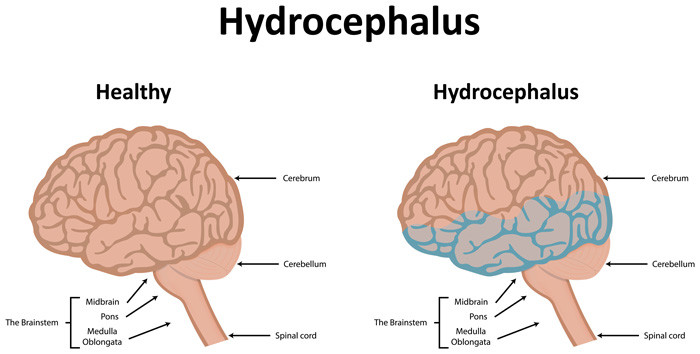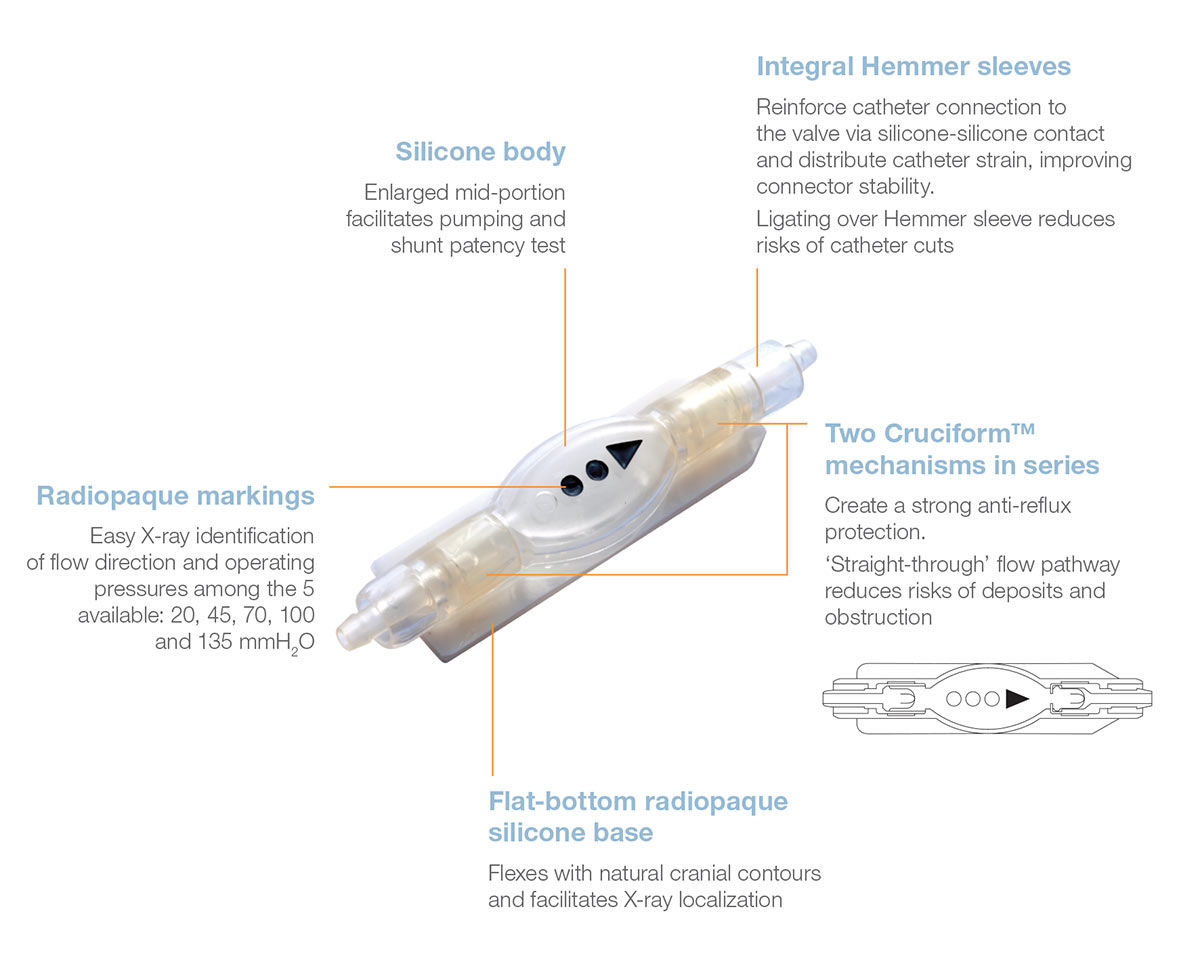Zulekha Hospital Sharjah
Sharjah,United Arab Emirates

VP Shunt, also known as a ventriculoperitoneal shunt, is a type of medical device that is used to relieve pressure on the brain that builds up from fluid accumulation. A VP shunt is used to treat a condition called hydrocephalus. This condition is characterized by an accumulation of excess cerebrospinal fluid (CSF) in the brain’s ventricles. CSF cushions your brain and protects it from any kind of injury. It also delivers nutrients to the brain and takes away the waste products.
When the normal flow of the CSF in the brain is disrupted, the fluid starts to build up, creating a harmful pressure on the tissues of the brain, leading to brain damage. Through surgery, a VP shunt is placed inside one of the brain’s ventricles, to divert fluid away from the brain and restore the normal flow and pressure.
Materials and Methods For VP Shunt Surgery
The materials used for VP Shunt affects the quality and longevity of the device to a great extent. The material of the implants or artificial devices inserted inside the body of the individual is highly important and the surgeons often choose what suits the candidate the best. In general, the material that is used for the VP Shunts are made up of silicone. The material not only adheres to the tissue component of the individual but also provides necessary longevity to the candidate. The silicone VP Shunts however, need to be replaced after a stipulated period of time. This varies with age of the candidate as for babies and children, vp shunt replacement is done after two years of functioning. Whereas, in case of adults, the vp shunts can be replaced anytime between six years to eight years of time.
The procedure for vp shunt surgery takes ninety minutes in general. During this period, the candidate is provided with local anesthesia so that no pain is felt by the candidate. Henceforth, a small incision is made at the back of the ear after being cleanly shaved. Through the incision the vp shunt surgeon will drill a hold right into the skull in order to reach the ventricles of the brain. A small catheter is used for draining the excessive fluid accumulated. The second catheter is made to pass subcutaneously through the chest and the abdominal region. This is done to make the excess fluid drain into the abdominal region where it gets absorbed back into the blood stream and the body of the candidate. In some cases, a pump which is connected to both the catheters are attached behind the ear of the candidate. This pump, also called the valve, ideally controls the fluid drainage and can be programmed to regulate the speed or intensity of fluid drainage.
The most common causes of hydrocephalus include a blockage. Cysts, tumors, or any kind of inflammation in the brain can lead to the disruption of the normal flow of CSF and result in a pressure build-up in the brain. The symptoms of hydrocephalus include the following:

To help drain the extra CSF from the brain, a VP Shunt is inserted into the head. This shunt takes extra fluid out from the brain into your belly, where it is absorbed by the body. This helps to reduce the pressure and swelling in the brain. The VP shunt surgery takes about one hour and is done in the operating room, while you are under the influence of general anesthesia.
A VP Shunt consists of 3 parts:
The valve controls the flow of the fluid and is attached to the short catheter to drain the fluid away from the brain. This short catheter can be placed in the front, back, or side of the head. The long catheter is also attached to the valve and is channeled under the skin, behind the ear, down the neck, and into your belly.
VP Shunts are required in case the candidate is diagnosed with hydrocephalus. In the case of children, the condition is most visibly noticed by the enlargement of the head. In grown-ups and adults, the condition may be confirmed with the help of other symptoms. VP shunts are implanted in the brain in order to help drain the excess cerebrospinal fluid from the ventricles so that the brain can continue to perform regular activities. The symptoms that may follow with hydrocephalus include headaches, cognitive impairments, movement impairment, irritability, delayed development, high-pitched cries among babies, muscle stiffness, nausea and vomiting, and many more.
VP Shunts have found high implementation because of their huge success in relieving the symptoms and extending longevity to the candidate. The treatment is also favored by most of the doctors as it is more affordable than other painful procedures which may not provide a long-term remedy. The cost of vp shunt in India has been estimated to be $1180, which is far more affordable than that of the countries. Apart from that, in some countries, the cost may surge up to $40,732 as in the United States.
After surgery, when you wake up, you are transferred to the recovery unit. Your body is attached to various machines that monitor the vital signs of your body such as blood pressure, temperature, heart rate, and oxygen level. You may feel tired after the surgery but it is quite normal.
For the first few days after surgery, the nurses may ask questions you to find out if your brain is functioning properly. A computed tomography (CT) scan of your head may be conducted one or two days after the surgery to confirm that the shunt is in place.
Your neck or belly may feel tender after the surgery. You may feel tired but there will not be much pain. You may experience headaches for a few weeks after surgery. You will also feel some fluid moving around in your scalp, however, it is common. This will go away as your scalp starts to heal.
VP shunt surgery is a major procedure as it involves implanting a device in the brain which will regulate and monitor the fluid content of the brain so that it can function properly. Thus, post surgery recovery of vp shunt may take time as the candidate needs to adjust with the new device monitoring inside the head. Where in the case of some candidates the recovery period may require only 3 to 4 days, Iin other cases, it may extend to over a week. In general, the candidate can get back regular activities after one week of complete rest. However, one must keep in mind to not indulge in activities that involve physical blows to the head for approximately six weeks.
Sharjah,United Arab Emirates
1 Reviews
In the year 1992 with the noble vision of Dr Zulekha Daud who shifted her base from India to Sharjah in order to serve people who are in need at an affordable cost, Zulekha Healthcare Group was established. She later established a hospital in Dubai too and Zulekha Dubai is now true to its mission of serving the suffering and the ailing. It is a multidisciplinary hospital with advanced diagnostic centres and well-equipped pharmacies. In the year 2004 the Dubai hospital saw its inception. It h... Read More
103
PROCEDURES
11
DOCTORS in 10 Specialties
6+
Facilities & Amenities
1+
Reviews
Dubai,United Arab Emirates
Prime Hospital in Dubai is one of the well-known hospitals in the city. Situated on the Airport Road at Al Garhoud, it is easily accessible from all locations of Dubai. It attracts visitors seeking health care from other countries as well. Started in 1999, the hospital has grown by leaps and bounds in the last 18 years. Today, it has advanced equipment, best surgeons and doctors, highly-trained medical and management staff, world-class operation theatres, and most of all, the global stamp of... Read More
75
PROCEDURES
16
DOCTORS in 9 Specialties
20+
Facilities & Amenities
Bangkok,Thailand
Vejthani hospital was established in the year 1994 in Thailand. Since then they have strived to provide world-class medical care to all with their exceptionally innovative patient-centric care approach. They have served immensely in their community and have opened their doors to serve the whole country of Thailand. In order to uphold the spirit of giving quality services to all they have laid special emphasis on having all their accreditations in place and having them renewed as per industry... Read More
107
PROCEDURES
50
DOCTORS in 13 Specialties
6+
Facilities & Amenities

Below are some of the most frequently asked questions related to life after getting a VP shunt:
Q. What is the normal life with a VP shunt?
A: Most of the patients with hydrocephalus need to retain their shunt for the whole life. The major advantage of this therapy is the restoration of a normal daily life. The VP shunt will regulate the flow of the CSF. You and your family might be required to take part in the surveillance after a VP shunt procedure. Your doctor will recommend post-operative precautions and regular medical check-ups to detect any possible complications.
Q. Is it possible to practice sports with a VP Shunt?
A: You can practice sports after this procedure like any normal person. However, you should avoid violent activities that can expose the device to shocks and damage the valve mechanism or pressure settings.
Q. Can I get pregnant with a VP Shunt?
A: Getting pregnant is not contraindicated in case you have a VP shunt. However, before you plan your pregnancy, it is important to discuss it with your neurosurgeon.
Q. Is it okay to travel with a VP Shunt?
A: Yes, you can travel normally with a VP shunt. The magnetic fields generated by airport security doors should not affect the pressure setting of your valve. However, do carry your Patient Identification Card with you at all times. This is a card provided to you by your neurosurgeon after shunt surgery.
Q. Can I drive with a VP shunt?
A: It is recommended that patients must not drive after six months of the VP shunt procedure. Even after 6 months, most of the patients come to know when they have high-pressure headaches. In such cases, driving should be avoided until shunt malfunctioning is ruled out or the symptoms resolve.
Q. Do I need to take any precautions with the adjustable valve?
A: Adjustable valves are insensitive to the influence of most of the everyday magnetic fields such as airport security doors, microwave ovens, mobile phones, and high tension wires and TV. They do not affect the pressure settings of your valves. However, the permanent magnets in smartphones, toys audio headphones and loudspeakers, and electromagnetic fields created by the electric motor from the shaver, hairdryer, and clipper can modify the pressure settings in the adjustable valves. Hence, to avoid any risk of pressure changes, these devices must not be brought too close to the valve site.
Q. Do I need to carry any particular document?
A: Yes, you need to keep the Patient Identification Card (PIC) with you all the times. This card is given to you by your neurosurgeon and provides information regarding the implanted device (reference, setting, etc.), which is important for your medical follow-up.
Q. When do I need to consult my doctor?
A: You should consult your doctor in case you experience a headache, vomiting, visual or hearing problems, sleepiness, walking difficulties, unexplained fever, redness, edema, any skin abnormality, or any other issue.
Q. Can I undergo an MRI exam with a valve?
A: A patient who has been fitted with a fixed pressure valve may undergo an MRI exam without any danger or special supervision. However, a patient with an adjustable pressure valve might need special supervision during an MRI exam. The pressure settings of the valves must be checked regularly before and after exposure to the MRI.
VP shunts have been a life-saver for innumerable people across the world. Candidates with hydrocephalus require the assistance of a vp shunt almost throughout their lives, and need to replace the same from time to time. However, this does not guarantee 100% working and efficiency of the device as like any other device, the shunts, too, are subject to malfunctioning. In case the device starts functioning abnormally, the candidate will experience recurrence of previous symptoms in addition to some more. A malfunctioning VP Shunt can be seen as redness in the area where the shunt has been planted. The painful sensation can be noted by the candidate as well. Besides, the cognitive performance of the candidate will also be recognized in this case. Apart from these, some of the common symptoms that should not be ignored are persisting headaches, vomiting, nausea, loss of appetite, dilemma, confusion and various others. However, vp shunt anomaly rarely occurs. This is also the reason why candidates are advised to opt for authorized clinics and multi-specialty hospitals as well as successful vp shunt surgeons, to achieve high chances of success altogether.

Get a Treatment Plan for VP Shunt
Talk to our ExpertsReferences: https://www.healthline.com/health/ventriculoperitoneal-shunt

With over 14 years of experience. Dr. Vijita Jayan is an extremely competent, skilled & revered Senior Neuro Physiotherapist. She holds an impeccable academic record and extensive experience in the field of neuro-rehabilitation. She is renowned for handling mobility-dependent cases. She is also an avid writer of several published articles & research papers. Being awarded several accolades in her career, she is considered one of the leading names In the field of Physical Medicine and Rehabilitation.
(+1) 424 283 4838